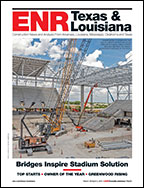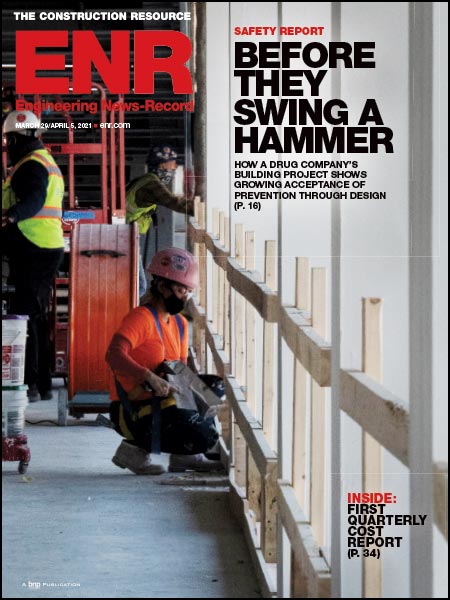Deciding Vote Due in March on Alaskan Way Viaduct
Rebuilding Seattle’s Alaskan Way Viaduct—not replacing it with a tunnel—is the only path forward, according to Washington Gov. Christine Gregoire (D). Although the governor and state lawmakers have decided to follow the state Dept. of Transportation’s advice and go with the rebuild, Seattle city officials seem to have ignored the memo. Next month, voters will weigh in through a non-binding vote on the rebuild vs. tunnel question. City officials are also once again considering the surface model, in which the viaduct would be replaced with a fast-paced boulevard that would carry up to 70,000 vehicles a day.
Since December 2004, Seattle officials have been campaigning to replace the 1953 double-decker freeway with a mile-long tunnel in an effort to open up its waterfront. Their plan was to tear down the viaduct, which was significantly damaged in the 2001 Nisqually earthquake. Then contractors would build a six-lane cut-and-cover tunnel to carry the roughly 110,000 vehicles traveling the freeway daily. In the last two years, the tunnel option ballooned from an estimated $3.1 billion to $4.6 billion. Meanwhile, rebuilding the 2.2-mile freeway would cost $2 billion to $2.4 billion. In 2005, Washington State dedicated $2 billion to the viaduct project from its gas-tax revenues. Still, city officials pushed forward with the tunnel plan.
Over the years, Seattle has debated a variety of potential transportation solutions: retrofit, rebuild, replace with surface roads, construct a six-lane tunnel or, most recently, build a four-lane hybrid tunnel.
Last year, retired structural engineer Victor Gray submitted a report to the state claiming the structure could be repaired for $800 million. In August, a state-funded report by T.Y. Lin International, San Francisco, concluded a retrofit was possible but that Gray’s report was incomplete. A follow-up study by the state Dept. of Transportation found it would require extensive strengthening of the underground foundations to strengthen the bridge and protect it against future earthquake damage. Plus, the repairs would only increase the structure’s life by 25 years.
“Major roadways in Washington are designed to a higher standard that ensures public safety in the event of a very bad earthquake. Gray's retrofit proposal doesn't meet that standard,” project manager Ron Paananen wrote in a memo to the city of Seattle.
Although the state dismissed his plan, Gray believes a retrofit is still a possibility. “I’ve been following this for a longtime and I just can't justify tearing down a 52 year-old viaduct just because it was slightly damaged. Tearing it down and rebuilding it or replacing it with a tunnel would be a waste of money.”
Next, at the request of community members, Seattle considered building a surface boulevard similar to San Francisco’s Embarcadero, running along the city’s ferry terminals and docks. But the plan to tear down the elevated freeway and direct traffic onto surface streets was quickly scrapped when city officials learned that state money would not be allocated for a transit design that would reduce traffic in the transportation corridor.
With two options clearly defined—rebuilding or the six-lane tunnel—Seattle continued championing the latter. To pay for the pricy tunnel, the city would pay an estimated $566 million, the Port of Seattle would kick in $200 million, and nearly $240 million would come from federal funds. The state DOT would contribute the most—nearly $2.2 billion.
But the financial plan started to unravel. First the port backed out, and next came word from the state’s U.S. senators that the federal dollars were “impossible.”
The governor gave an ultimatum: offer a solid funding plan, or she would move forward with the rebuild. She threatened to reallocate the viaduct’s $2 billion to the floating Evergreen Point Bridge along the State Route 520 Highway across Lake Washington. “This leaves us with a very difficult decision,” she stated. “There are two remaining options: Move forward with an elevated viaduct replacement or reprogram funding to the 520 replacement project,” the governor said in a statement.
If the tunnel option is going to survive, then Seattle will have to get the green light from voters.
Since the six-lane tunnel isn’t financially viable, the city has proposed a four-lane hybrid tunnel to reduce the project’s price tag. “The proposal for the surface/tunnel hybrid offers a more cost-effective, environmentally-sound transportation solution that will save over $1 billion compared to WSDOT's inflated six-lane alternative,” says Seattle Mayor Greg Nickels.
But the four-lane hybrid option stalled after WSDOT declared it was unsafe, had inadequate traffic and freight capacity, would require significant transit investments and could not be built in the city’s proposed 33-month construction schedule.
“The lack of full-time shoulders would degrade safety and diminish traffic flow as compared to the appropriate tunnel design that would include access to shoulders at all times,” wrote state Transportation Secretary Doug MacDonald in a memo to the governor and state Senate Transportation Committee. “Whatever the theoretical capacity of the proposal when it is operating flawlessly, the practical fact is that the effects of vehicle breakdowns and other limiting factors from the operating configuration will often diminish the useable capacity of the proposed tunnel.”
On March 13, voters will choose to rebuild the double-decker freeway, replace the elevated-freeway with a tunnel or reject both options. The vote is non-binding.



